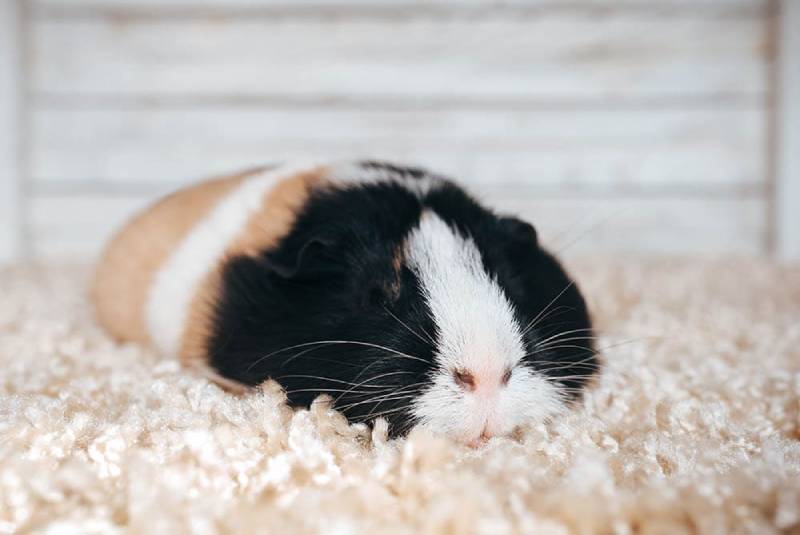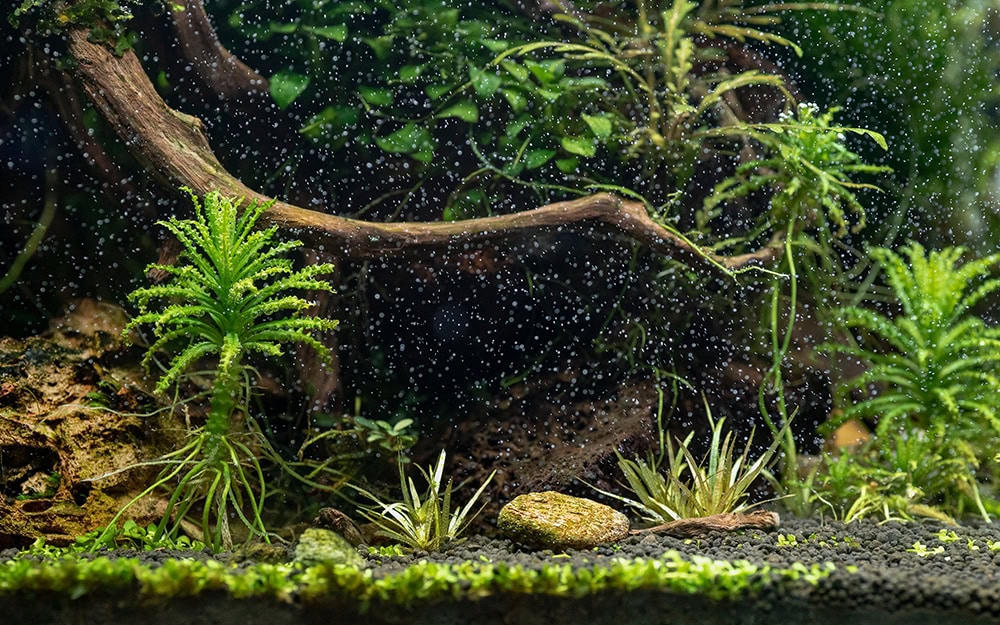Do Guinea Pigs Have Tails? Facts & FAQ
Updated on
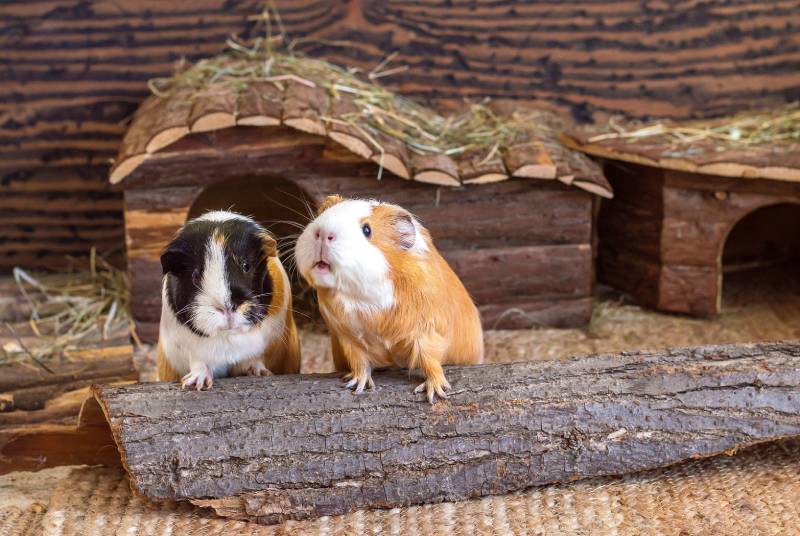
The most identifying trait of a guinea pig (besides the constant squeaks) is the mysterious hidden tail. Where does one find a tail in such a perfect fuzzy potato?
Actually, guinea pigs don’t have tails.1 Some fuzzy guinea pigs look like they have a little nub on their bums, but it’s just fur. Guinea pigs are uniquely tail-free.

Did Guinea Pigs Ever Have Tails?
The truth is that guinea pigs never had tails and never evolved to have tails. Guinea pigs most likely come from the Andean Montane guinea pig in Peru, Bolivia, Argentina, and Chile. People started domesticating the species in 5,000 B.C. Since then, guinea pigs have been some of the most popular pets worldwide.
Andean Montane guinea pigs also don’t have tails but look slightly different from modern guinea pigs. The earliest remains of wild guinea pigs are dated around 9,000 B.C. from Columbia. Guinea pigs have been around for a long time. Even so, their transition from the wild to domestication didn’t change their anatomical features.
The skeletal remains of ancient guinea pigs show that they never had tails. However, they’ve always had tailbones, with some slightly longer than others.
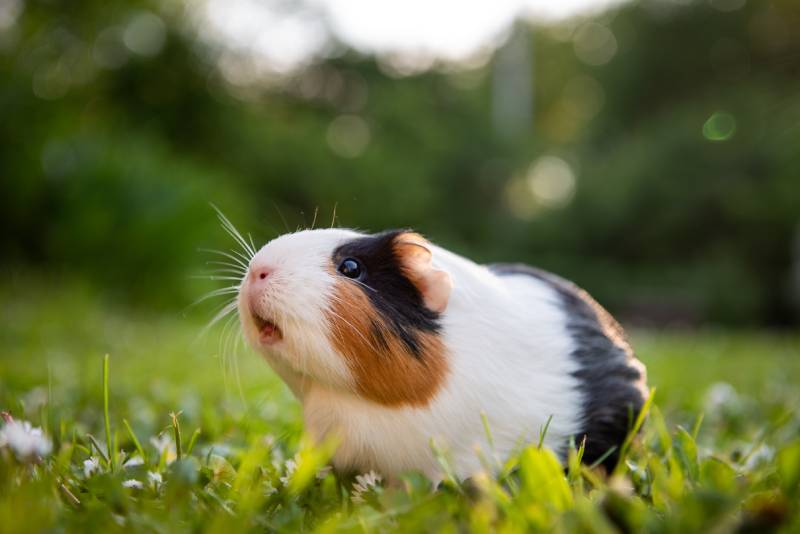
How Do Guinea Pigs Show Emotion?
If guinea pigs don’t have tails, how do they show emotion to other guinea pigs and humans? It’s simple. They’re very vocal creatures and share their opinions with their guinea pig friends and humans. Guinea pigs have six main vocalizations: chutts, whines, squeaks, purrs, chirps, and whistles. Each one has a different meaning.
Chutts convey a predatory pursuit while a whine is used afterward. Squeals and squeaks mean there is danger nearby or an injury. Whistles and chirps are the most exciting because they mean food is nearby. They’re also used for long-distance communication.
Other sounds like wheeks and rumbles are reserved for gaining attention from humans and showing dominance around other guinea pig males.
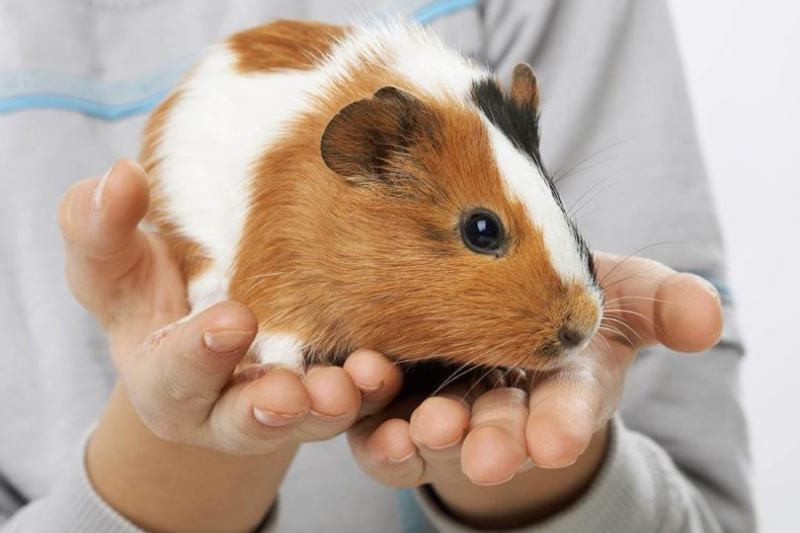
What Kind of Animal Is a Guinea Pig Anyway?
Guinea pigs are rodents and belong to the Caviidae family, a group of rodents native to South America. These animals look fairly similar—large heads, short limbs, robust bodies, and no tails.
Other animals in the Caviidae family include maras, yellow-toothed cavies, mountain cavies, and rock cavies. The only animal in this family that looks different is the mara. Maras look more like hares with stubby tails and long legs.
What Purpose Does a Guinea Pig Have?
Guinea pigs originally served as a food and medicinal source, which is why mankind began domesticating them. In some parts of the world, this is still true.
However, in America, we love our guinea pigs as pets. Laboratories use them in animal testing, too, hence why we use the term guinea pig when testing something new. But most guinea pigs find their way into homes as pets.


Conclusion
Guinea pigs are well-loved in America thanks to domestication efforts thousands of years ago. Interestingly, their relationship with humans and environmental changes never affected their physical features too much. They’ve always been the tail-less little furballs we all love.
Featured Image Credit: Kiki vera yasmina, Shutterstock

